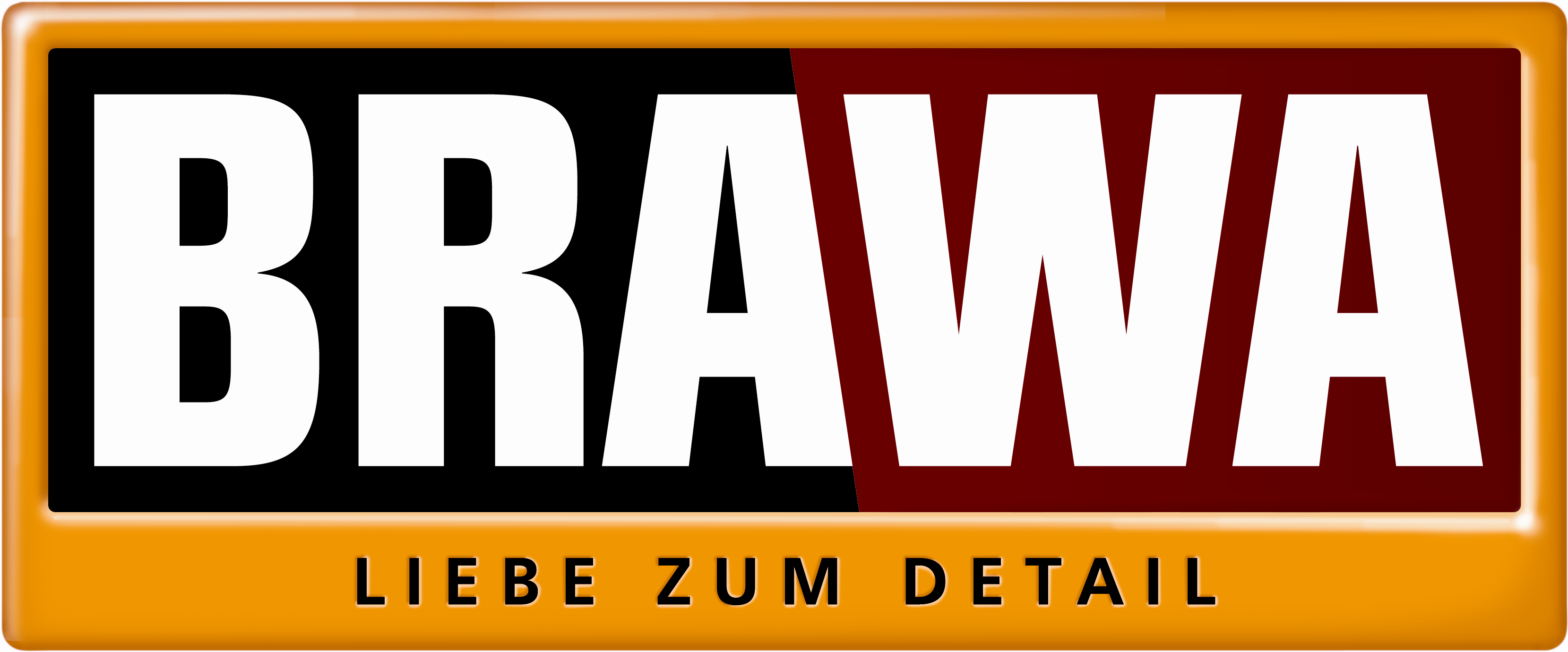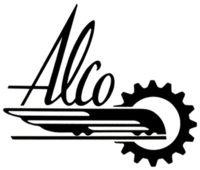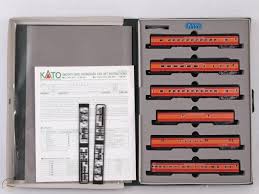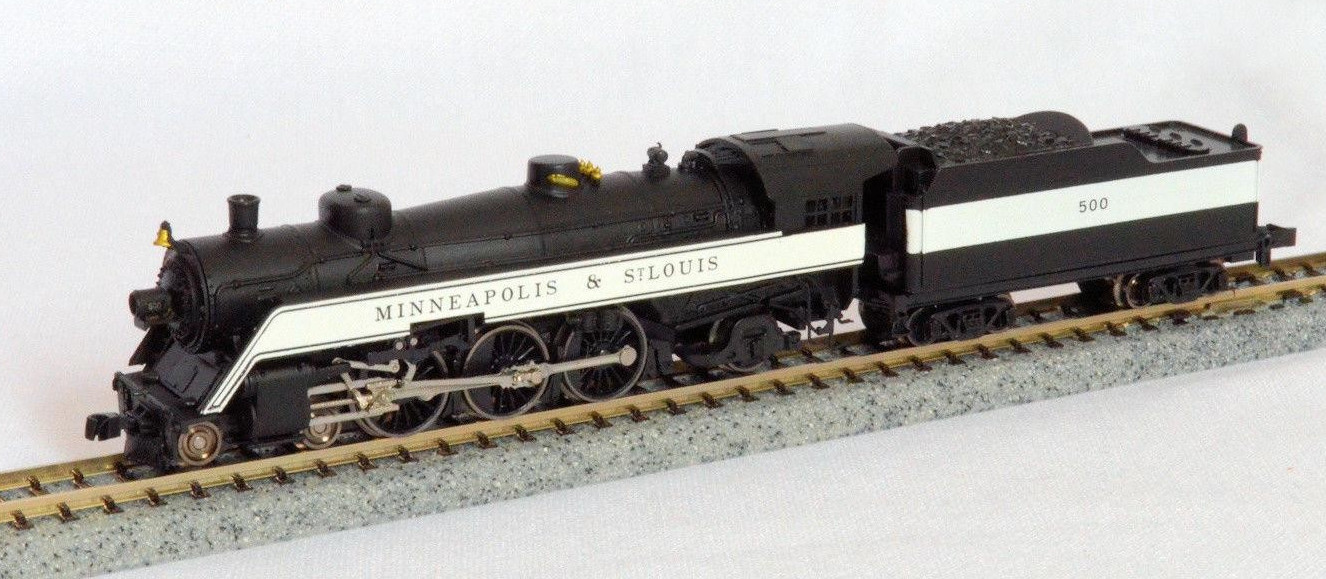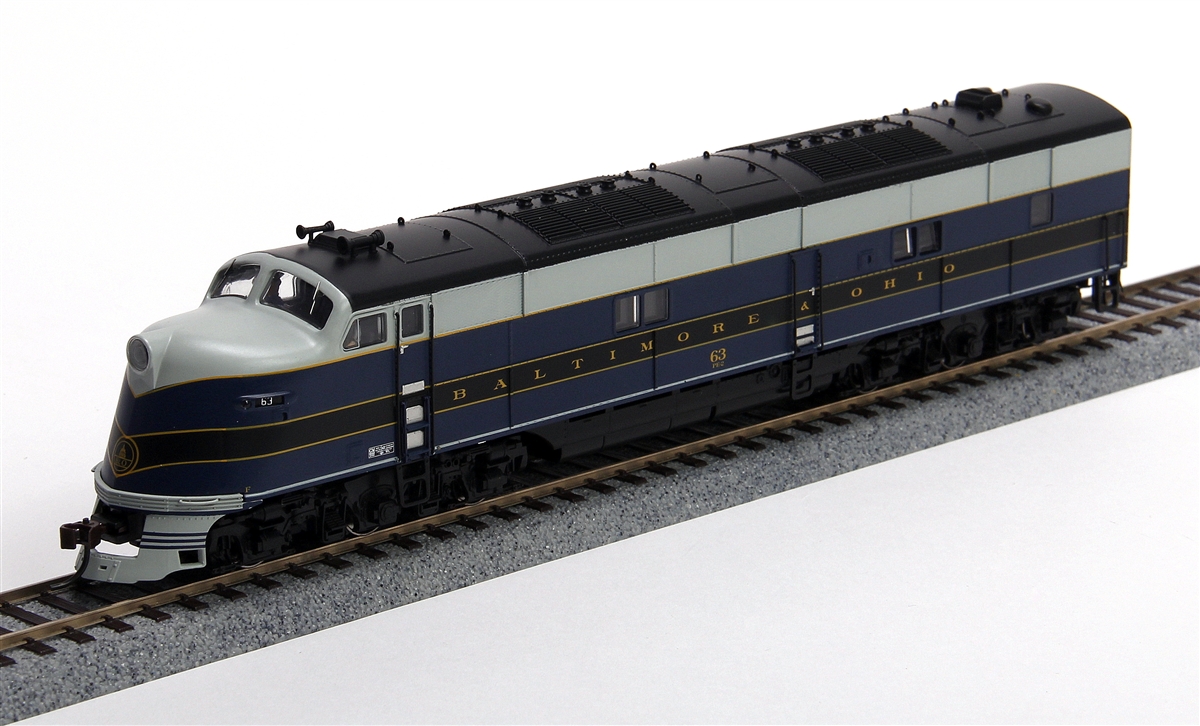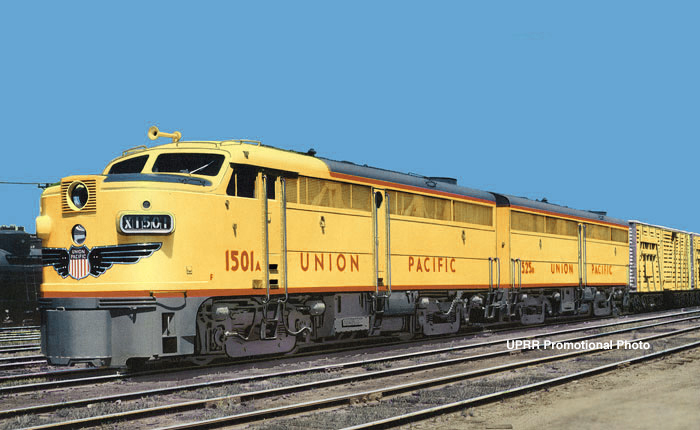Specific Item Information: 3-pack, A-B-A configuration, A units are motorized, B unit is dummy.
198 Deutsche Mark
198 Deutsche Mark
Model Information: Model introduced in 1993 and fully revised in 2002 with the same mechanism as the FA-1/FB-1 introduced 2 years before.
The 1993 version consisted of powered FA-2 units and dummy FB-2 units, sold separately. It features a plastic chassis that supports the motor and weights above the truck towers. Couplers are truck-mounted with an open pilot.
The 1993 version was imported in Europe by Brawa as 3-packs (A-B-A configuration) in a Brawa packaging.
The 2002 version, sold as FA-2/FB-2 set, with both engines powered, features:
The 1993 version consisted of powered FA-2 units and dummy FB-2 units, sold separately. It features a plastic chassis that supports the motor and weights above the truck towers. Couplers are truck-mounted with an open pilot.
The 1993 version was imported in Europe by Brawa as 3-packs (A-B-A configuration) in a Brawa packaging.
The 2002 version, sold as FA-2/FB-2 set, with both engines powered, features:
- split-frame
- open-sided, skew-wound 5-pole motor
- dual flywheels
- all wheels geared and provide power pickup
- non directional headlight
DCC Information: No provision for DCC for any of the two versions.
Prototype History: The ALCO FA was a family of B-B diesel locomotives designed to haul freight trains. The locomotives were built by a partnership of ALCO and General Electric in Schenectady, New York, between January 1946 and May 1959. They were of a cab unit design, and both cab-equipped lead (A unit) FA and cabless booster (B unit) FB models were built. A dual passenger-freight version, the FPA/FPB, was also offered. It was equipped with a steam generator for heating passenger cars.
Externally, the FA and FB models looked very similar to the ALCO PA models produced in the same period. Both the FA and PA models were styled by General Electric's Ray Patten. They shared many of the same characteristics both aesthetically and mechanically. It was the locomotive's mechanical qualities (the ALCO 244 V-12 prime mover) and newer locomotive models from both General Motors Electro-Motive Division (EMD) and General Electric (the partnership with ALCO was dissolved in 1953) that ultimately led to the retirement of the FA/FB locomotive model from revenue service. Several examples of FAs and FBs have been preserved in railroad museums, a few of them in operational status on such lines as the Grand Canyon Railway and the Napa Valley Wine Train. ALCO's designation of F marks these locomotives as being geared primarily for freight use, whereas the P designation of the PA sets indicates that they were geared for higher speeds and passenger use. However, beyond this their design was largely similar, and many railroads used FA and PA locomotives for both freight and passenger.
Externally, the FA-1/FB-1 could be distinguished from the FA-2/FB-2 (FPA-2/FPB-2) by the position of the radiator shutters – the FA-1/FB-1's shutters were at the far end of the carbody, whereas on the FA-2/FB-2 they were further forward, the design having been modified to allow the installation of a steam generator behind the radiator.
The FPA-4/FPB-4 were visually different due to the additional radiator space that was positioned below the shutters.
From Wikipedia
Read more on American-Rails.com.
Externally, the FA and FB models looked very similar to the ALCO PA models produced in the same period. Both the FA and PA models were styled by General Electric's Ray Patten. They shared many of the same characteristics both aesthetically and mechanically. It was the locomotive's mechanical qualities (the ALCO 244 V-12 prime mover) and newer locomotive models from both General Motors Electro-Motive Division (EMD) and General Electric (the partnership with ALCO was dissolved in 1953) that ultimately led to the retirement of the FA/FB locomotive model from revenue service. Several examples of FAs and FBs have been preserved in railroad museums, a few of them in operational status on such lines as the Grand Canyon Railway and the Napa Valley Wine Train. ALCO's designation of F marks these locomotives as being geared primarily for freight use, whereas the P designation of the PA sets indicates that they were geared for higher speeds and passenger use. However, beyond this their design was largely similar, and many railroads used FA and PA locomotives for both freight and passenger.
Externally, the FA-1/FB-1 could be distinguished from the FA-2/FB-2 (FPA-2/FPB-2) by the position of the radiator shutters – the FA-1/FB-1's shutters were at the far end of the carbody, whereas on the FA-2/FB-2 they were further forward, the design having been modified to allow the installation of a steam generator behind the radiator.
The FPA-4/FPB-4 were visually different due to the additional radiator space that was positioned below the shutters.
From Wikipedia
Read more on American-Rails.com.
Road Name History: 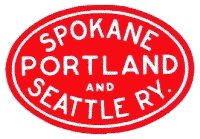 The Spokane, Portland & Seattle Railway (SP&S) (reporting mark SPS) was a United States-based railroad incorporated in 1905. It was a joint venture by the Great Northern Railway and the Northern Pacific Railway to build a railroad along the north bank of the Columbia River. Remnants of the line are currently operated by BNSF Railway.
The Spokane, Portland & Seattle Railway (SP&S) (reporting mark SPS) was a United States-based railroad incorporated in 1905. It was a joint venture by the Great Northern Railway and the Northern Pacific Railway to build a railroad along the north bank of the Columbia River. Remnants of the line are currently operated by BNSF Railway.
The railroad was chartered in 1905 by James J. Hill to connect the two transcontinental railroads owned by him, the Northern Pacific (NP) and Great Northern (GN), to Portland, Oregon from Spokane, Washington, to gain a portion of the lumber trade in Oregon, a business then dominated by E.H. Harriman's Union Pacific and Southern Pacific railroads. Construction began in 1906 under the name Portland & Seattle Railway, proceeding eastward from Vancouver, Washington. 1906 also saw the start of construction of the line between Vancouver and Portland, including work on three major new bridges, crossing the Columbia River, the Oregon Slough and the Willamette River. The northernmost of these was the first bridge of any kind to be built across the lower Columbia River.
In January 1908 "Spokane" was added to the railroad's name, making it the Spokane, Portland & Seattle Railway. SP&S freight and passenger service (from Pasco) to Portland was inaugurated in November 1908. By 1909 the railroad had completed construction of its line up to Spokane along the Snake River. In 1910 SP&S gained control of the Oregon Electric interurban railway, which the Great Northern had acquired two years before. Under the control of the SP&S the railroad was extended southward to Eugene, Oregon by 1912. SP&S also operated a second subsidiary railroad in western Oregon, the Oregon Traction Company, which owned a route to Seaside, Oregon. A third route on which the SP&S operated extended southward from Wishram, Washington to Bend, Oregon was the Oregon Trunk Railroad.
Read more on Wikipedia and The Spokane Portland and Seattle Railway Historical Society

The railroad was chartered in 1905 by James J. Hill to connect the two transcontinental railroads owned by him, the Northern Pacific (NP) and Great Northern (GN), to Portland, Oregon from Spokane, Washington, to gain a portion of the lumber trade in Oregon, a business then dominated by E.H. Harriman's Union Pacific and Southern Pacific railroads. Construction began in 1906 under the name Portland & Seattle Railway, proceeding eastward from Vancouver, Washington. 1906 also saw the start of construction of the line between Vancouver and Portland, including work on three major new bridges, crossing the Columbia River, the Oregon Slough and the Willamette River. The northernmost of these was the first bridge of any kind to be built across the lower Columbia River.
In January 1908 "Spokane" was added to the railroad's name, making it the Spokane, Portland & Seattle Railway. SP&S freight and passenger service (from Pasco) to Portland was inaugurated in November 1908. By 1909 the railroad had completed construction of its line up to Spokane along the Snake River. In 1910 SP&S gained control of the Oregon Electric interurban railway, which the Great Northern had acquired two years before. Under the control of the SP&S the railroad was extended southward to Eugene, Oregon by 1912. SP&S also operated a second subsidiary railroad in western Oregon, the Oregon Traction Company, which owned a route to Seaside, Oregon. A third route on which the SP&S operated extended southward from Wishram, Washington to Bend, Oregon was the Oregon Trunk Railroad.
Read more on Wikipedia and The Spokane Portland and Seattle Railway Historical Society
Brand/Importer Information: Brawa Artur Braun Modellspielwarenfabrik GmbH & Co. was founded in 1948 by Artur Braun in Waiblingen, Germany, to distribute model trains from other toy makers; eventually they began to manufacture their own lighting accessories such as streetlights and signals. In 1963 they acquired the complete line of motorized trolleybus and ski lift models from Eheim. They also began to expand their own line to include scenery items, and by 1993 they'd added locomotives and rolling stock to their product range. This medium-sized business is today jointly managed by the second and third generations of the Braun family: Günter Braun, son of the founder, and his daughter Katrin Braun are the company's managing partners.
Brawa range covers HO, O and N scales. The N scale range is focused on European rolling-stock, German locomotives and accessories like signals, streetlights, clocks and telephone booths.
Here is how the company describes itself:
At BRAWA, continuity and sustainable thinking and action - as the particular strengths of a family business - have a double impact. Changes are carefully considered and strategic decisions taken on the basis of a long-term vision, thus enabling the company to respond quickly and deliberately to the demands of the market. In addition, cross-generation collaboration ensures a vibrant coexistence of tradition and innovation.
In short, our future course is set and all signals are pointing towards continuity and growth. Our presence at our site in Remshalden shows our commitment to this area and highlights the sustainable nature of our company's location in the region. Sustainability is, as it were, an intrinsic value of our family business.
Brawa range covers HO, O and N scales. The N scale range is focused on European rolling-stock, German locomotives and accessories like signals, streetlights, clocks and telephone booths.
Here is how the company describes itself:
At BRAWA, continuity and sustainable thinking and action - as the particular strengths of a family business - have a double impact. Changes are carefully considered and strategic decisions taken on the basis of a long-term vision, thus enabling the company to respond quickly and deliberately to the demands of the market. In addition, cross-generation collaboration ensures a vibrant coexistence of tradition and innovation.
In short, our future course is set and all signals are pointing towards continuity and growth. Our presence at our site in Remshalden shows our commitment to this area and highlights the sustainable nature of our company's location in the region. Sustainability is, as it were, an intrinsic value of our family business.
Item created by: Alain LM on 2020-04-20 15:29:13. Last edited by Lethe on 2020-05-07 00:00:00
If you see errors or missing data in this entry, please feel free to log in and edit it. Anyone with a Gmail account can log in instantly.
If you see errors or missing data in this entry, please feel free to log in and edit it. Anyone with a Gmail account can log in instantly.




